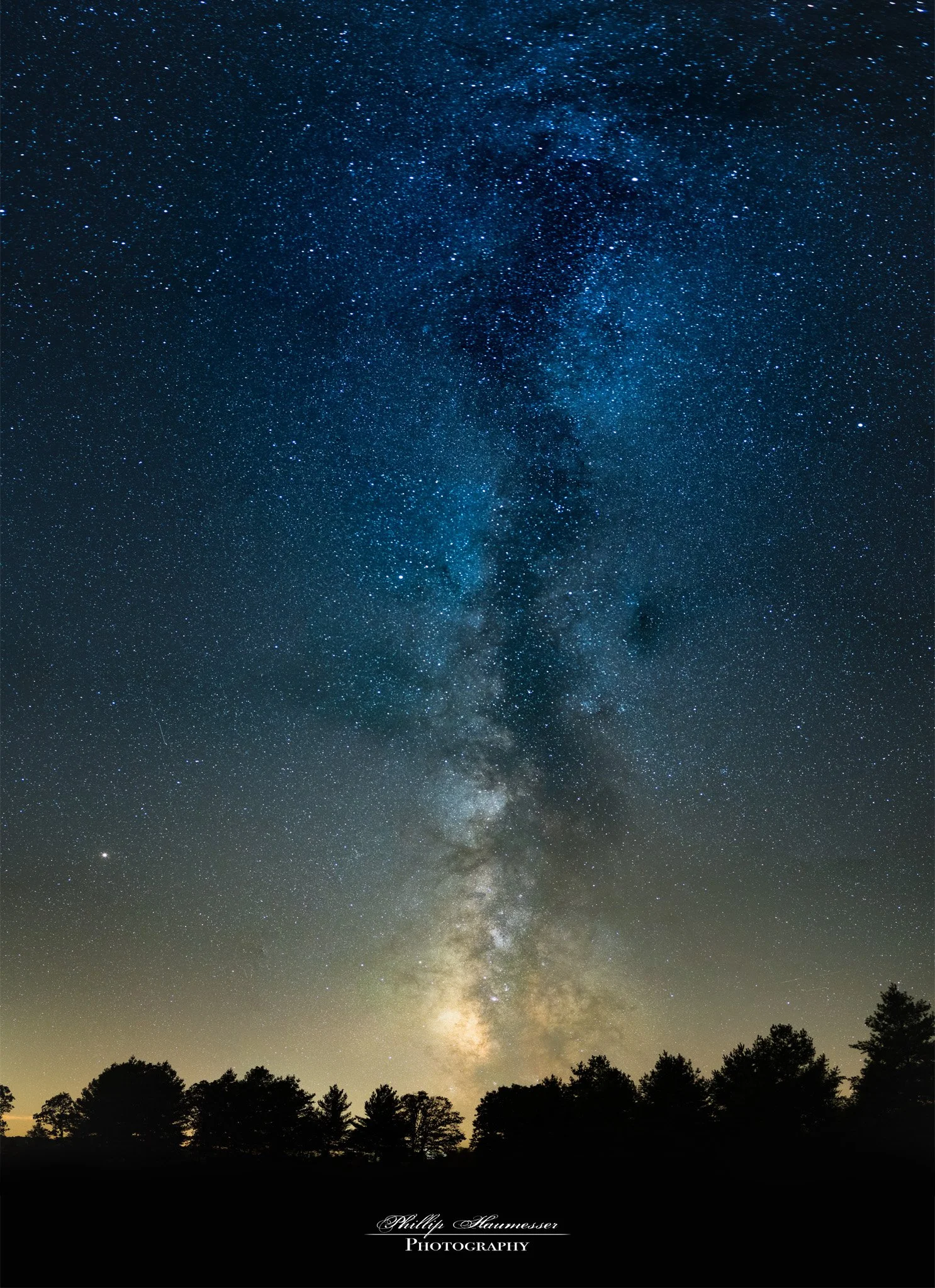Night Photography Demystified: Capturing the Hidden World After Sunset
By: Phillip Haumesser
Night photography opens a portal to a world most people sleep through—twinkling stars, glowing streets, and shadows that whisper secrets. But diving into the dark can daunt even seasoned shooters: How do you tame low light without noise? What if your shots turn out murky? The intrigue lies in the challenge: What unseen narratives emerge when the sun dips, forcing us to rethink exposure, patience, and perception? In this post, we'll unpack night photography's essentials, from gear basics to advanced techniques, with practical steps to make your after-dark images mesmerizing. Whether you're urban exploring or stargazing, let's illuminate the night.
The Allure and Challenges of Night Shooting
Why chase photos when the world's asleep? Nighttime transforms the familiar—buildings become beacons, skies unveil galaxies. It provokes thought: In our always-on society, does darkness reveal truths daylight obscures? Yet challenges abound: Dim light demands longer exposures, risking blur from movement or camera shake. Noise creeps in at high ISOs, and focusing in the dark? Tricky. But mastering these flips the script, turning obstacles into artistic tools. Consider how long exposures blur water into silk or car lights into trails—motion becomes abstraction, questioning time's flow in a static frame.
Essential Gear: What You Really Need (And What You Don't)
You don't need a fortune in kit, but smart choices help. A sturdy tripod is non-negotiable—handheld nights invite shake. Wide-angle lenses (14-35mm) capture vast skies; fast apertures (f/1.4-f/2.8) suck in light. A remote shutter release prevents jiggle during long exposures. For stars, a star tracker compensates for Earth's rotation, but start basic.
Skip the flash—night's about ambient glow. Use your camera's bulb mode for exposures over 30 seconds. Apps like PhotoPills predict Milky Way positions or moon phases, adding strategy: How does planning for celestial events make us ponder our place in the cosmos?
Budget tip: Your smartphone can dip toes in—apps like NightCap extend exposures. The point? Gear enhances, but vision drives. What if limitations spark more creativity than unlimited options?
Core Techniques: Exposure, Focus, and Composition in the Dark
Night shooting rewires your exposure triangle:
Shutter Speed: Go long—15-30 seconds for city lights, 20-25 for stars (follow the 500 rule: 500/focal length = max seconds before trails). Slower speeds question stillness: Is a "frozen" night photo ever truly static?
Aperture: Wide open gathers light but risks softness; stop down to f/4-f/8 for sharpness if your lens allows. Balance depth of field—foreground elements add layers, probing: What foreground tells a story against infinite night?
ISO: Start at 800-3200; higher invites noise, but modern cameras handle it. Denoise in post, but embrace grain for mood—does "imperfect" noise add authenticity in a polished digital age?
Focusing: Auto struggles, so switch to manual. Use live view, zoom on a bright point (streetlight or star), and adjust. Infinity focus works for distant scenes, but test it.
Composition: Nights amplify contrasts—pair lit subjects with dark voids. Leading lines from roads or rivers guide eyes; negative space emphasizes isolation. Frame questions: How does emptiness evoke emotion in a crowded world?
Advanced Tips: From Stars to Streets
Elevate with these:
Star Trails and Astrophotography: Stack short exposures (e.g., 100 at 30 seconds) in software for trails without noise. Or capture the Milky Way in dark skies—ISO 3200, 20 seconds. Ponder: Shooting cosmos humbles us—what vast questions do these images raise about existence?
Light Painting: Use a flashlight to "paint" subjects during long exposures. Draw shapes or highlight details—it's playful experimentation, asking: Can we "create" light where none exists?
Urban Nights: Capture neon reflections on wet pavement post-rain. Time for blue hour (post-sunset twilight) for balanced sky glow. City lights probe urban solitude: Amid bustle, why do nights feel loneliest?
Noise and Post-Processing: In editing, stack images for cleaner results (software like Sequator). Adjust curves for contrast, but subtly—over-editing kills night's mystery. Question: Does post-processing enhance truth or craft illusion?
Safety first: Scout locations daytime, bring a buddy for remote spots, and respect no-trespass signs.
Overcoming Common Pitfalls
Nights test patience—blurry results frustrate. Solutions:
Shake: Tripod plus remote; mirror lock-up on DSLRs.
Noise: Shoot RAW; use long exposure noise reduction in-camera.
Over/Underexposure: Bracket shots (multiple exposures); merge in HDR for dynamic range.
Boredom Waiting: Use downtime to meditate on the scene—what deeper meanings emerge in quiet darkness?
These hurdles build resilience: What if failures teach more than successes?
Your Night Photography Challenge
Dive in: This week, attempt three night shoots—one urban, one natural, one experimental (like light painting). Vary exposures; review what surprised you. Share thoughts: How did the dark shift your perspective?
The Deeper Draw: Night as Metaphor
Night photography isn't just technical—it's philosophical. Darkness forces adaptation, mirroring life's uncertainties. Capturing light in void questions visibility: What "invisible" aspects of daily life deserve our lens? In a bright, noisy world, nights remind us of subtlety's power.
Wrapping It Up
Night photography rewards the bold with images that intrigue and inspire. Master exposures, embrace challenges, and let darkness reveal its gifts. The night awaits—what will you uncover?
Grab your tripod, head out after sunset, and let the stars guide you!
~Phillip
Ready to Conquer the Night?
Night photography unlocks a whole new world, but nailing it takes know-how. In my Online Photography Academy, explore over 100 video tutorials on low-light techniques, gear setups, and editing tricks, with a Q&A where I answer your burning questions. Let's turn those dark hours into dazzling shots—join today at illuminate your skills!

